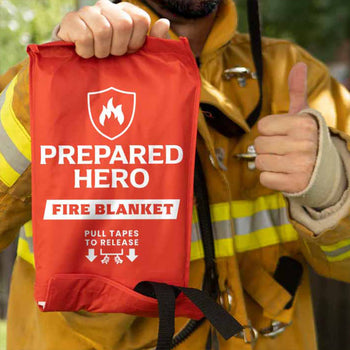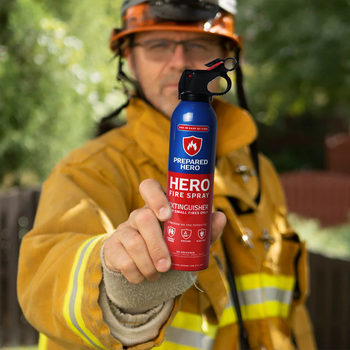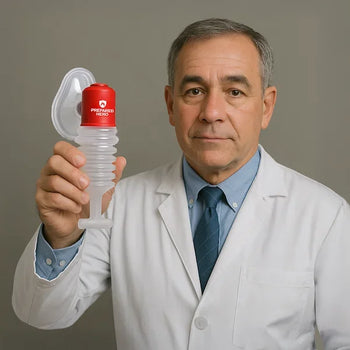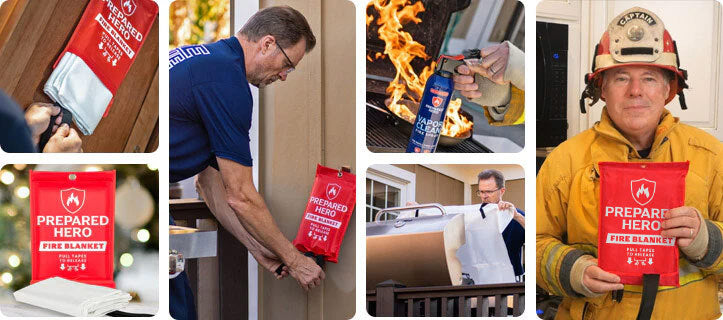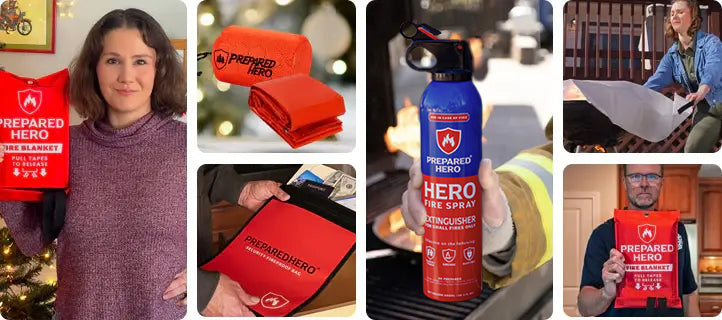Where you put your smoke detectors matters just as much as installing them. Proper placement makes sure they can detect...
Propane fire pits are becoming more popular for many reasons. But what exactly is a propane fire pit? How does it work? Is it safe?
In this guide, we’ll talk about what propane fire pits are, how they work, how to use them safely, and how long they last.
What Is a Propane Fire Pit?

A propane fire pit is a gas-powered outdoor fire pit. It uses propane instead of wood. As a result, it’s easy to light up, burns cleanly, and doesn’t leave ashes behind. Most modern propane fire pits also come with push-button ignition and adjustable flames, so they’re convenient for patios, backyards, and balconies.
They’re ideal if you want the warmth and look of a fire without having to chop wood or clean up a smoky mess. You can also move them around easily, which is amazing if you like switching things up.
Many designs also double as stylish furniture pieces, adding both function and flair to your space. And since propane burns cleaner, it’s a safer option for air quality, especially if you live in a neighborhood with fire restrictions.
What Is the Average Lifespan of a Propane Fire Pit?
The lifespan of a propane fire pit mostly depends on the materials used and how well you take care of it. Fire pits made from steel or aluminum can last many years with proper maintenance, while concrete ones usually don’t last as long.
Weather plays a big role, too. Leaving your fire pit out in the rain or harsh sun will wear it down faster. Regular cleaning can also make a huge difference.
On average, a standard 20-pound tank holds around 430,000 BTUs (British Thermal Units). This gives you three to six hours of burn time on high heat and up to 50 hours on low. The higher the BTU output, the faster your propane burns.
So clean your propane fire pit regularly, cover it when not in use, check for leaks, and use a lower flame when you can to prolong its lifespan.
How to Use a Propane Fire Pit Safely

Using a propane fire pit lets you enjoy the outdoors, but safety should always come first. Here’s how to use a propane fire pit safely:
1. Use It Outdoors Only
Propane fire pits are made for outdoor use. Never use them inside a home, tent, or enclosed area.
2. Keep It in an Open, Ventilated Space
Place your fire pit in a spot with plenty of airflow. Remember, it needs space to burn safely.
3. Put Flammable Stuff Away
Don’t place paper, fabric, or anything flammable near the fire pit.
4. Never Leave It Unattended
Always keep an eye on your fire pit when it’s lit. Accidents can happen fast if no one’s around.
5. Have Safety Tools Nearby
Keep a fire extinguisher, fire blanket, or fire spray within reach. It’s better to have them ready and not need them than the other way around. If you want reliable, easy-to-use, and affordable tools to put out small fires before they spread, check out Prepared Hero’s fire prevention tools here, and get up to 51% off on certain items.
How to Choose a Propane Fire Pit

Choosing the right propane fire pit doesn’t have to be complicated. Pick something that fits your space, keeps you warm, and is safe to use. Here’s what to consider when choosing one:
1. Size
Start by measuring the area where you’ll place your fire pit. A 24- to 36-inch model works well for small groups (two to four people). On the other hand, a 36- to 44-inch model works for four to six people. If you’re hosting big gatherings, get a 48-inch model or bigger.
Then, make sure the size you choose fits your space. It should also be far enough from anything that can burn. According to the US Fire Administration, your fire pit should be at least 10 feet away from your home or anything that can burn.
2. Heat Output
Heat output matters. Smaller patios might only need 10,000+ BTUs, while bigger yards could use 50,000 to 150,000 BTUs. Portable propane pits usually max out around 40,000, while permanent ones offer more power.
3. Safety Features
Look for automatic ignition, flame control knobs, and spark screens. A glass wind guard is also great if you have pets or kids. Lastly, a stable base is a must.
4. Style and Material
Pick a design and material that fits your outdoor setup. For instance, steel and concrete are low-maintenance, while copper looks great but needs polishing.
What Are the Benefits of a Propane Fire Pit?

Thinking about adding a fire pit to your backyard? Propane fire pits are a solid choice for many reasons. Here’s why they’re worth considering:
1. Easy to Use
Forget matches or kindling. Just twist a knob or press a button, and you’ve got flames. It’s quick, simple, and hassle-free.
2. No Wood Needed
You also don’t have to chop, haul, or store firewood. This means less mess and more space for the fun stuff.
3. Refills Are Easy
Propane tanks are easy to find and easy to replace or refill. You usually don’t have to plan ahead just to keep the fire going.
4. Move It Anywhere
Propane tanks are portable, so you can move your fire pit around your patio or yard whenever you want.
5. Cleaner Flames
Propane burns cleaner than wood. It doesn’t produce ash, smoke, or soot, so you won’t be left smelling like a campfire.
6. Better for the Air
You also don’t have to deal with harmful chemicals or particulates floating around. It’s a more eco-friendly and healthier option for your outdoor hangouts.
7. Safer All Around
Propane fire pits have no hidden embers, so you can easily control the flame height. This means less risk and more peace of mind when enjoying the fire.
What Are the Downsides of a Propane Fire Pit?

Propane fire pits are convenient, but they’re not perfect. One of the biggest downsides is the fuel. You’ll need to store propane tanks somewhere safe, and you’ll have to swap them out or refill them pretty often. This can get expensive over time, especially compared to wood.
Many propane fire pits also don’t produce big, cozy flames like a traditional wood fire. As a result, you miss out on the crackling sound and woody smell that make a campfire feel real. Plus, you have to make sure the area is well-ventilated to avoid fire risks. While it’s easy to use, there are a few trade-offs.
Are Propane Fire Pits Worth It?
Propane fire pits are worth it if you want a hassle-free setup. They’re easy to use, don’t produce smoke or ash, and don’t leave you smelling like a campfire. You also have to deal with swapping propane tanks, but there’s no need to gather wood or clean up after. If you’re all about convenience and low maintenance, they’re a solid choice.
How Long Will a 20-LB Propane Tank Last in a Fire Pit?

A 20-pound propane tank usually lasts three to six hours if you’re running your fire pit on full blast. But if you turn the flame down or your fire pit has a lower BTU rating, it can last way longer (up to 50 hours in some cases). In short, how long it lasts depends on how high you crank the flame and how often you use it.
Do Propane Fire Pits Give Off Carbon Monoxide?
Yes, propane fire pits can give off carbon monoxide. However, this usually happens if something’s not working right or there’s poor ventilation. If the fire isn’t burning cleanly (like when the burner is dirty or there’s not enough air), it can produce carbon monoxide instead of just carbon dioxide and water. For this reason, you should only use propane fire pits outdoors or in well-ventilated areas. Never use them indoors or in enclosed areas.
Do You Need to Vent a Propane Fire Pit?

Yes, you need to vent a propane fire pit. Propane is heavier than air, so the gas can collect at the bottom without proper ventilation. This can explode or start a fire.
Whether your fire pit is built-in or portable, make sure there are vents near the base to let trapped gas escape. This helps prevent dangerous gas buildup and keeps the fire burning efficiently.
Plus, always follow the manufacturer's ventilation guidelines, especially if you're installing the fire pit in a semi-enclosed area like a patio, deck, or fire pit table.
Do Propane Fire Pits Get Hot Underneath?
Yes, propane fire pits get hot underneath, and that’s something to watch out for. Even though most of the heat goes upward, it can build up underneath the unit. If you place it directly on a wooden deck, grass, or patio surface, the heat can cause damage over time. That’s why it’s smart to use a heat shield or fire pit pad underneath. It helps protect whatever surface the fire pit is sitting on and keeps things safer while you enjoy the flames.
Which Is Better, a Wood or a Propane Fire Pit?

Choosing between a wood or propane fire pit depends on what matters most to you. Here's a quick breakdown to help you decide:
Wood Fire Pits
A wood fire pit is amazing for that classic campfire feel, but it takes more effort. Here’s a quick look at the pros and cons of wood fire pits:
Pros
- Classic campfire vibe: You get the crackling sound, smoky smell, and that cozy, natural look.
- Great for cooking: Perfect if you want to grill hot dogs or roast marshmallows the old-school way.
- Adjustable fire size: Just add more wood to make it bigger or let it die down naturally.
Cons
- More work: You need to store firewood, start the fire manually, and clean up ash afterward.
- Not as convenient: Lighting and keeping a wood fire going takes more effort and attention.
- More smoke and emissions: Not the best choice if you're trying to stay eco-friendly.
- Safety risks: Sparks and high heat can be tricky to manage, especially on windy days.
Propane Fire Pits
A wood fire pit is easy to use, but doesn’t have the classic campfire feel. Here’s a quick look at the pros and cons of propane fire pits:
Pros
- Convenient: Just turn a knob and you’ve got fire. No wood, no mess.
- Easy to maintain: No ash or soot to clean up.
- Safer overall: It’s easier to control the flame, and there’s less risk of sparks flying around.
- Cleaner burning: Propane gives off fewer emissions than wood, so it’s more eco-friendly.
Cons
- Not the same feel: You won’t get the crackling sound or smoky scent some people love.
- Ongoing fuel costs: Propane tanks need to be refilled or replaced, which adds up over time.
- Potential leak risks: Like any gas-powered device, you have to use it carefully.
- Possible installation fees: You need professional help to set up the built-in version.
Is Lava Rock or Glass Better for Propane Fire Pits?

Fire glass is generally preferred over lava rock because it’s durable and aesthetic. It’s engineered to withstand high temperatures as well. Plus, it reflects light for that striking, modern flame display.
While lava rock offers a more natural, rustic look and is more budget-friendly, it retains heat less efficiently and tends to degrade faster. But at the end of the day, the better option depends on your needs and wants. For instance, if you value looks, go for fire glass. If you value your budget, choose lava rock.
Can a Propane Fire Pit Go On a Wood Deck?
Yes, you can use a propane fire pit on a wood deck, but you need to be smart about it. Propane fire pits are safer than wood-burning ones because they produce less heat underneath and no flying sparks or ash. That said, the bottom of the fire pit can still get pretty hot, which might damage your deck over time.
Stay safe by placing a heat-resistant pad or fire pit mat underneath. It protects the wood from heat or accidental spills. Make sure the fire pit is stable and well-ventilated, too. With the right setup and safety steps, you can enjoy your fire pit without worrying about your deck getting scorched.
Do Propane Fire Pits Give Off a Lot of Heat?

Propane fire pits give off a good amount of heat, but it mainly depends on the model. Some are powerful enough to make your legs feel toasty even on chilly nights, while others are more for looks than warmth.
The heat output comes down to the BTU rating. The higher it is, the hotter it gets. Some fire pits can reach over 1,200°F (648.9°C), while others might barely crack 550°F(287.8°C). Most propane fire pits also have a control knob, so you can turn the heat up or down depending on what you need. If staying warm is your main goal, go for a model with higher BTUs and good flame coverage.
Where Do You Put Glass Rocks in a Propane Fire Pit?
You put glass rocks on the burner area in a propane fire pit. Start by making sure the burner is clean and in place. Then, gently spread the fire glass across the burner area. You don’t need a thick pile (half to one inch), just enough to fully cover the burner without smothering it.
This helps the gas flow evenly and gives you steady, nice-looking flames. Avoid piling the glass too high, or you might block the burner and mess with the flame. You also don’t need sand or gravel underneath unless your fire pit design calls for it. Even coverage is all you need.
Conclusion
Propane fire pits are a solid pick if you want something easy to use, low-maintenance, and cleaner than wood. Just keep in mind the fuel costs, proper ventilation, and safety steps. They might not give you the full campfire vibe, but they still bring the warmth and ambiance.


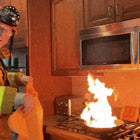 Fire
Fire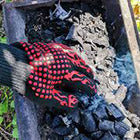 Safety
Safety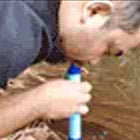 Survival
Survival Protection
Protection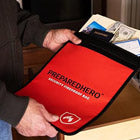 New
New Scouting America
Scouting America
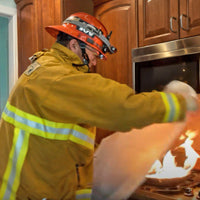 Fire
Fire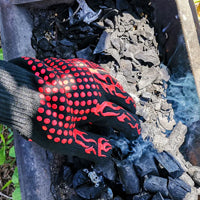 Safety
Safety Survival
Survival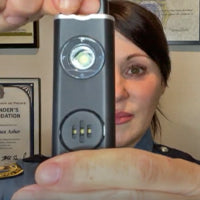 Protection
Protection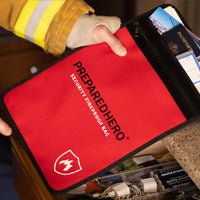 New
New
